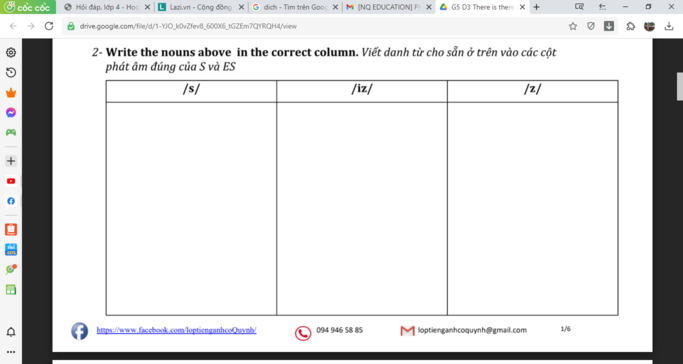1. A child ........children............... 2. A tooth ..teeth................
3. A man ..men..................... 4. A fish ........fishes...............
5. A box ....boxes................... 6. A deer ....deers................
7. A leaf ......leaves............ 8. A woman.women..................
9. A watch ........watches............... 10. An ox ... oxes...................
11. A potato ........potatoes............... 12. A goose.. geese................
13. A glass ........glasses............... 14. A mouse .....mice................
15. A quiz .........quizzes.............. 16. A foot .......feet................
17. A book ......books................. 18. A roof .......roofs................
19. A radio ........radios............... 20. A reindeer .....reindeers................
21. A photo ......photos................. 22. A baby ....babies...................
23. A police man.....policemen................ 24. A toy .......toys................
25. A bike .........bikes.............. 26. A teacher .........teachers..............
27. A duck ........ducks............... 28. A pupil .....people..................
29. A dish .......dishes................ 30. A tomato .........tomatoes............
 Mọi người nhìn những từ ở trên rồi cho vào cột sau giúp mik nhá
Mọi người nhìn những từ ở trên rồi cho vào cột sau giúp mik nhá


